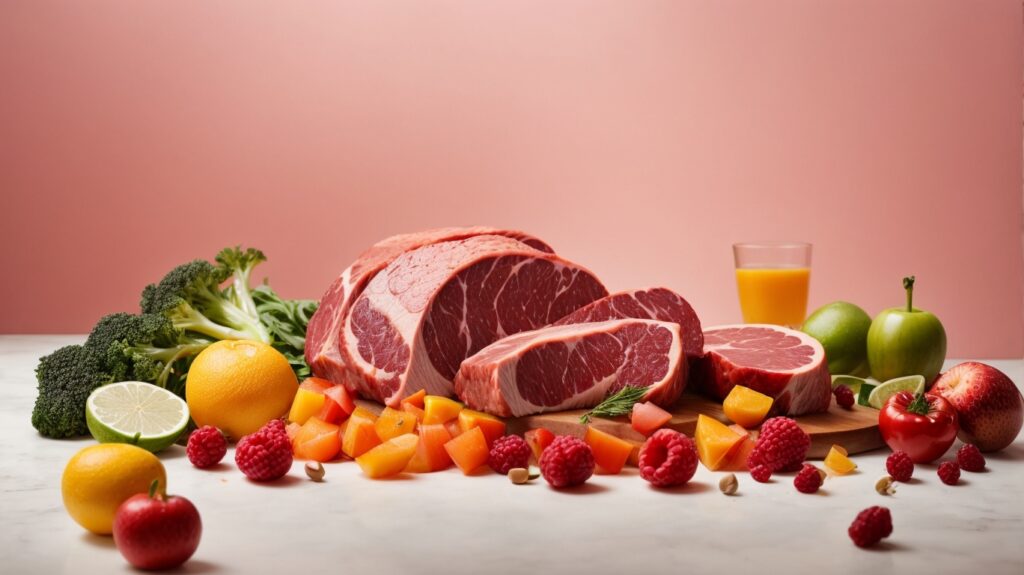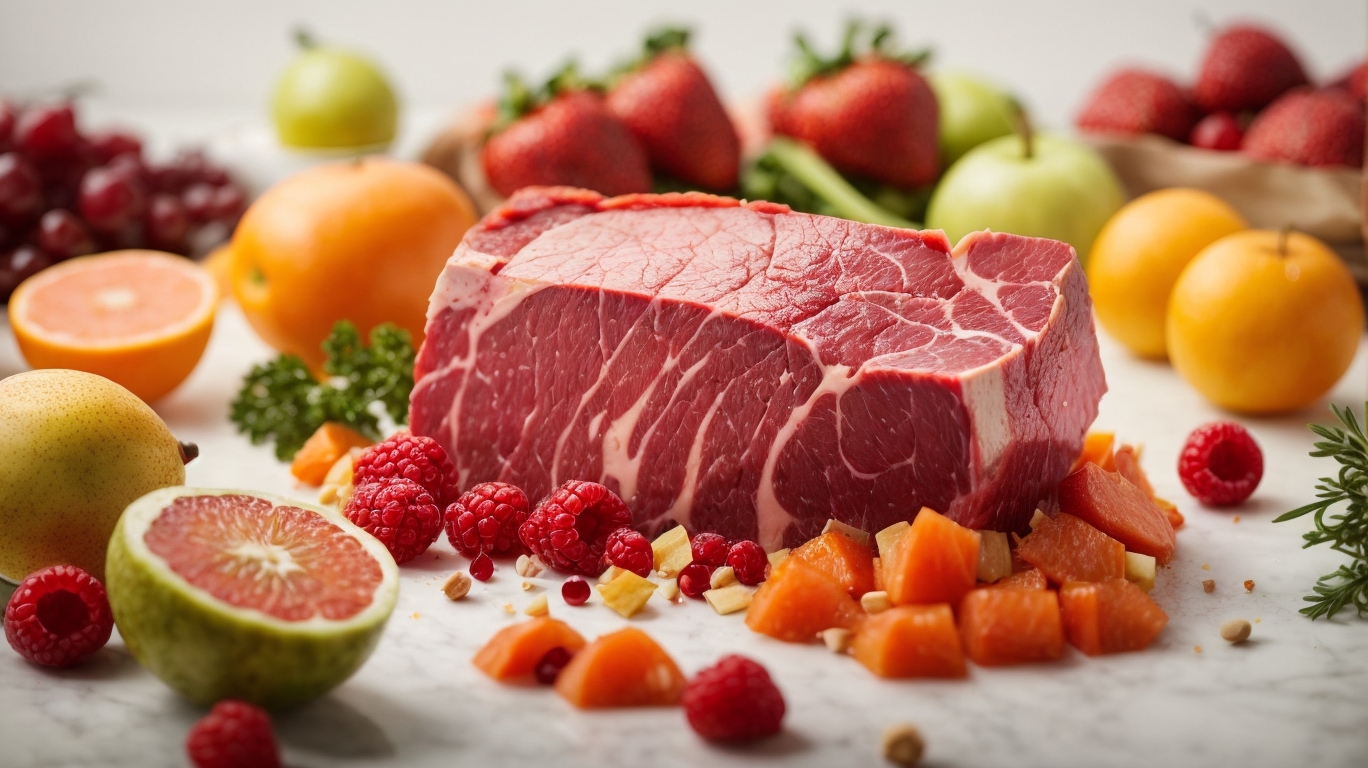Have you wondered if a natural diet might be better for your cat? This comprehensive guide to natural cat food covers everything you need to know, from ingredients and benefits to top recommended brands and feeding tips. Read on to learn why natural nutrition supports long-term wellness!
Table of Contents
Introduction to Natural Cat Food

Over the past decade, natural and organic pet foods have grown rapidly in popularity. An estimated $5.5 billion was spent on these products in 2019 alone.
As pet parents pay more attention to their own diets and nutrition, many look to do the same for their four-legged companions. This rising demand stems from wanting the absolute best for our furry friends.
But with so many options on store shelves, how can we determine if natural cat food delivers meaningful benefits? This article focuses specifically on feline nutrition to cut through the confusion. You’ll learn exactly why feeding your cat a natural diet supports long-term wellness and happiness.
What Does “Natural Cat Food” Really Mean?
Unlike human food, pet food does not have an official definition or certification from regulatory agencies like the FDA for being “natural”. However, guidelines in the industry establish some common criteria:
- Made with real, whole food ingredients: Natural cat foods contain quality animal proteins, fruits, veggies, healthy oils and more—not artificial substitutes.
- Free from artificial additives: No artificial preservatives, colors, flavors, or sweeteners.
- Often grain-free formulations: Especially for cats, since felines lack the ability to digest plant-based grains.
- May include raw meats, fruits, veggies: Some companies use raw, freeze-dried, or gently cooked natural ingredients.
Essentially, natural cat food aims to deliver balanced nutrition from real, minimally processed food sources. This mirrors the meals cats would hunt in the wild. Many brands exceed conventional standards to use quality ingredients and preparation methods.
The Benefits of Feeding Your Cat a Natural Diet
Switching Fluffy or Felix to a natural food formula provides tangible benefits for their health from nose to tail. Here’s why a natural diet is ideal for cats:
Supports Digestive Health
Cats are obligate carnivores, meaning they must eat animal-based proteins. Plant materials like corn, wheat, soy and byproducts overwork your cat’s digestive system. Natural cat foods instead feature easily digestible animal proteins as the key ingredient, protecting the sensitive stomach and gut.
Boosts Immune Function
Antioxidant-rich whole food ingredients like fruits and veggies provide immune support. Natural cat food excludes harmful additives while minimizing processing that destroys nutrients. This combination strengthens the body’s defense systems.
Improves Skin and Coat Condition
Omega fatty acids from various fish, seeds, or oils lead to a noticeably silkier, shinier coat. Meals made with real meat instead of mystery meat byproducts also contribute to skin vitality.
Aids Healthy Weight Management
Grain-free natural cat food helps cats maintain an ideal weight since grains typically cause blood sugar spikes. Higher protein with lower carbs stabilizes glucose and insulin activity while keeping your cat satisfied between meals.
Increases Energy Levels
More bio-available vitamins, minerals, antioxidants and nutrients from whole foods translate to a peppier, livelier cat with greater stamina for playtime adventures!
Reduces Allergies and Sensitivities
Limited ingredient recipes with novel proteins minimize exposure to common feline allergens. Cats with food sensitivities may see symptoms resolve after switching.
Promotes Long-Term Wellness
The combined impact of all these benefits accumulates over your cat’s lifetime for improved longevity, happiness and quality of life. Natural nutrition provides preventative care.
Now that you know why natural cat food is ideal, next let’s explore how to identify and select the best formula for your feline friend.
How to Choose a Truly High-Quality Natural Cat Food

With “natural” being such a common buzzword on pet food packaging, discerning marketing claims from legitimate products can prove difficult. Place emphasis on these aspects when comparing options:
Consider Your Cat’s Needs
Choose an age-appropriate recipe: kitten, adult or senior. Factor in activity level, any health issues, or genetic predispositions like urinary tract disorders. If your cat suffers from allergies or intolerance’s, identify potential triggers and use an elimination diet under veterinary guidance.
Assess the Ingredients List
Seek out quality animal-based proteins like chicken, beef, lamb, tuna, etc. as the first several ingredients. Look for fruits, veggies, healthy carbohydrates and fats. Make sure the formulas don’t contain vague terms like “meat byproducts” or “meat meal”.
Understand Moisture Content
Canned or pouch foods (up to 78% moisture) help cats meet hydration needs, while freeze-dried raw (2-4% moisture) requires soaking before feeding. Kibbles range widely in moisture level depending on baking time and temperature. This influences nutrition analysis for appropriate daily feeding amounts.
Research Manufacturing Processes
How each company handles ingredients from source through production significantly impacts quality. Many leading natural brands focus on retaining nutritional value via gentle cooking or raw food preparation techniques. They often refuse to outsource or co-pack.
Confirm Safety Standards
Any cat food facility in the United States must comply with FDA regulations, but many natural pet food companies far surpass baseline requirements. Look for brands displaying extreme diligence in practicing food safety via frequent third-party auditing and stringent protocols.
By examining multiple factors related to ingredients, processes, facilities and more, you can determine which natural cat foods meet excellence benchmarks. Now let’s explore the different diet types and formulas you’ll encounter.
Types of Natural Cat Food Diets

Natural cat foods feature various forms and processing to deliver balanced everyday nutrition or address specific needs:
Raw Frozen
Consists of raw meat, organs, bones, fruits, veggies and supplements frozen into portioned mixes. Offers enzyme-rich nutrition mirroring ancestral feline diets. Requires safe handling.
Freeze-Dried Raw
Raw food ingredients freeze-dried while retaining up to 97% of nutritional value. Shelf-stable yet reconstitutes upon mixing with water. Some limited ingredient options.
Canned & Pouch
Wet foods with up to 78% moisture. Allows for mixing raw and cooked ingredients into an imperishable consolidated meal. Offers stew-like texture.
Grain-Free Kibble
Baked dry kibble utilizes legumes, tubers or tapioca instead of grains. May see formulas based on ancestral diets or with limited carbohydrates. Varies widely in protein content.
Limited Ingredient Diets
Contains a single novel protein and carbohydrate source ideal for cats with food sensitivities. Limits exposure to potential allergens.
Pairing canned or pouch varieties with kibble or raw meets a cat’s needs for moisture, mimics natural hunting behaviors via texture variety and provides balanced everyday nutrition tailored to your cat’s life stage and activity level.
Tips for Transitioning Your Cat to a Natural Diet

Shifting your cat from conventional food to healthier natural nutrition requires some finesse. Follow these tips:
- Gradually transition over 5-7 days, slowly increasing the new food ratio while decreasing old food. This allows their digestive system to adjust.
- Stick to feeding guidelines based on weight, life stage and activity level. Over or underfeeding creates problems.
- Provide constant access to clean, fresh water. Cats have low thirst drives and natural food increases hydration needs.
- Note changes in energy, stool, skin and coat condition. Monitor for diarrhea, constipation or vomiting.
- Ask your vet about probiotics, digestive enzymes or fortified broths if needing digestive support.
- Don’t give up too quickly if your cat resists the new texture or flavors initially. Allow an adjustment period.
- Mix in shredded meat pieces or nutrient broth as “treats” to increase palatability while transitioning.
As creatures of habit, cats notoriously seem suspicious of any food upgrades. But remain patient and consistent while accompanying the diet shift with amplified affection and playtime. In time, your cat will be thriving on their new natural nutrition plan.
Is Feeding Your Cat a Natural Diet Really Worth It?
At the start of this post, we set out to answer: does natural cat food provide meaningful benefits compared to conventional grocery store varieties? After taking a comprehensive look at what defines this category, examining nutritional advantages, offering shopping guidance and recommending leading brands, we feel equipped to draw some conclusions.
The Bottom Line: For most cats, switching to a thoughtfully balanced natural diet positively impacts long-term health and happiness. Minimally processed foods made from quality ingredients in safe facilities allows our feline companions to thrive. The investment pays dividends in more time together thanks to preventative nutrition.
Of course, costs exceed conventional options. And some cats-adjustment period as they transition. But with patience, care and consistency, your beloved fur-ball can continue satisfying their carnivorous instincts with more species-appropriate meals supporting vitality from nose to tail.
If you found this guide useful as you consider upgrading your cat to natural nutrition, please bookmark or share! Leave any questions in the comments below. Here are some frequently asked questions as well:
FAQs About Natural Cat Food
Does my cat really need natural cat food?
No, many cats live full lives eating conventional diets, especially if purchasing above-average grocery store brands. However, natural foods maximize nutritional benefits to optimize long-term health.
Is it bad to suddenly switch my cat’s food?
Yes, sudden switches can cause digestive upset, diarrhea or lack of eating. Always transition gradually over 5-7 days, slowly adjusting the ratio of old to new food.
Are freeze-dried or frozen raw foods safe?
Yes, reputable brands adhere to strict standards in safely handling raw ingredients. But always thaw foods properly and maintain clean preparation spaces to avoid cross-contamination.
Which is better canned or kibble?
For cats, a mix is ideal! Canned and pouch foods provide needed hydration and moisture, while kibbles offer crunchy texture and help clean teeth. Balance both in your cat’s diet.

